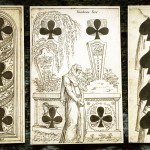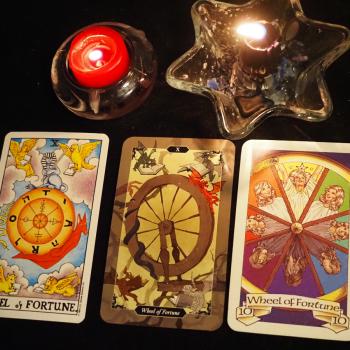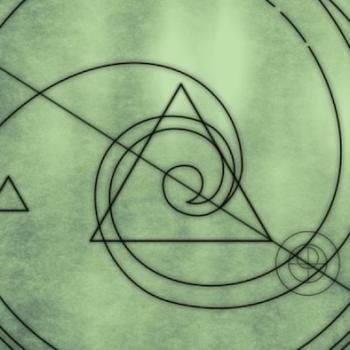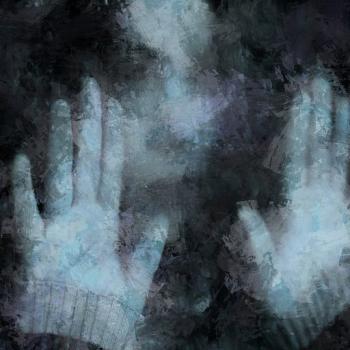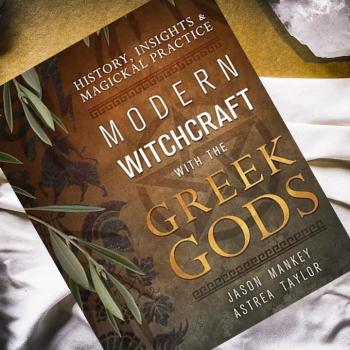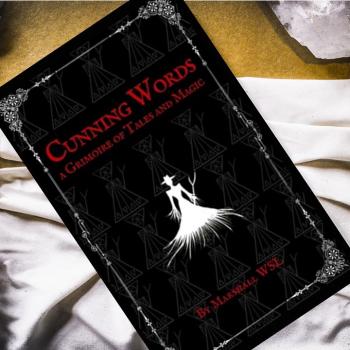Then in 1900 everybody got down off his stilts; henceforth nobody drank absinthe with his black coffee; nobody went mad; nobody committed suicide; nobody joined the Catholic Church; or if they did I have forgotten. -W.B. Yeats
1.
As T.S. Eliot once explained, Charles Baudelaire and J.K. Huysmans entered the Roman Catholic Church from the “backdoor” — through the portals of poetic Satanism and the Black Mass. Like Judas’ betrayal leading to the world’s salvation, after a Black Mass in which Satan enters him through the Eucharistic bread, the Decadents of the late nineteenth century entered the Church from the backdoor by reinstating sin and guilt into a world that had forgotten them along with the hope of salvation.
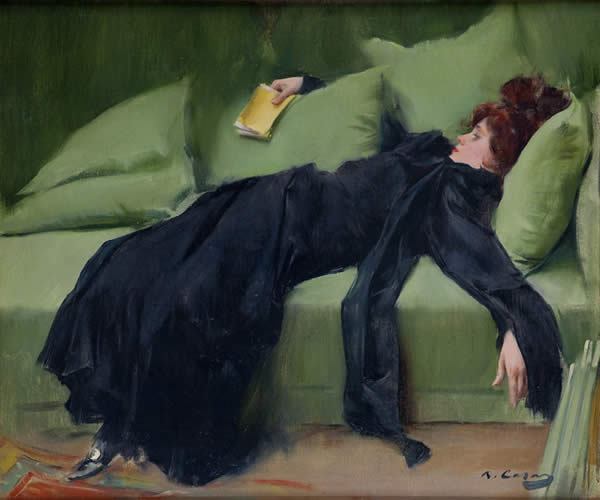
2.
For Durtal–the thinly veiled autobiographical character who moves from Satanism to Catholicism in J.K. Huysmans’ quartet of Decadent novels–the Catholic Church provides an imagined haven from the terrors of industrialism and mediocrity. Yet even Durtal, in the end, is foiled; the haven is a kind of darkness, and it does not provide the rest he was seeking.
Moving in the other direction, Georges Bataille abandoned the Cathedral of his pious years to–philosophically speaking–live in the street, but the remembrance of the monastery gave him inner peace. Similarly, the decadent Catholic pose is to remain in the street but look back toward the church, a church which turns to ruin upon entering it. The decadent theological imagination holds up divine rest and locks it away in the unnatural vision of a medieval church that never was, of the Godhead imprisoned for safekeeping in the tabernacle, of the impossibly restored and enchanted cathedral, of beautiful fever dreams and dusty books. The Decadents embraced an aesthetic of spiritual failure, of the inevitable death and decay of all their strivings for sanctity.
3.
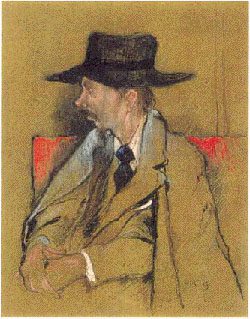
Eugene Thacker’s “horror of philosophy” interrogates philosophy with the texts of supernatural horror, medieval negative theology, and Bataille’s transgressive mysticism. By doing so he wishes to go to the limit of philosophical thought, where thought meets the unhuman, and thus to the unthinkable — the nouminous (numinous+noumenal) horror that is also a religious intuition of mystics who enter into contact with the divine darkness.
Yet the English Decadents retained the understanding that the mystical encounter with darkness (usually a Christological encounter, especially in the form of the Eucharist, which Thacker doesn’t examine), though horrible in the sense that divine rest is not forthcoming, causes the Decadent to become a carrier of darkness — the “Catholic diabolism” of Enoch Soames and Dorian Grey. In a different mode, the dissatisfaction, pessimism and misanthropy of Frederick Rolfe’s George Arthur Rose (antihero of Rolfe’s Hadrian the Seventh) leads not to madness or the Des Esseintes-like attempt to build an aesthetic fortress against the tide of modernity, but to inscribe his own sin and shame and darkness into the Church and world itself, as Pope Hadrian VII.
Unlike the doomed protagonists of the Gothic novel and the later weird writers (H.P. Lovecraft and his circle), who attempted to subdue the forces of darkness with their philosophical reason and were crushed by the noumenal terror of a cosmos indifferent or hostile to humanity, the Decadent Catholics made themselves the villains of a gothic tale of their own making, an appropriate role for English Catholics who were the villains of the Protestant imaginary of the earlier generation.
4.
The Decadent Catholics are thus the late 19th century equivalent of the occultists and cult-worshippers of the weird tales; they have seen the darkness and have pledged themselves to it. Thus for them the Catholic Church is the weird and terrible abyss that the evangelical Christians saw it as — and they celebrated it for this. In the hands of a Hadrian VII, it could also offer the possibility of drawing the rest of the world into its void or of explaining to the world the process of this abyssal presence.
The Eucharist, then, becomes a black hole, the real absence that draws the mystics in like Bataille is drawn into Madame Edwarda’s vagina. The Church was born of the wound in Christ’s side and is fed by the wound (as the mystics knew). The nouminous horror of the resurrected body of Christ only makes contact with believers in two ways: the bread of the Eucharist (Luke) and the holy wounds (John). These provide the abyssal entrance that smashes the believer and reforms him as a carrier of divine darkness. The divine is a contagion that the Decadents gladly contracted, a pact with both the Devil and with God.
5.
Aleister Crowley’s Thelemic mysticism suggests that to cross the Abyss (figured here as a kind of noumenal Sabbat-zone that forms and reforms into all the monstrous possibilities at the edge of consciousness), the magician must pour all his individuality and subjectivity into the cup of the Whore of Babalon, which contains the blood of the saints. Only then can the adept become little more than a sheet of dust, carried across the abyss by his own momentum. For Crowley and his followers, this is the manner in which the microcosmic adept faces the noumenal terror of the macrocosm.
But, Crowley also describes the Black Brothers, the followers of the left-hand path, who refuse to abandon themselves into Babalon’s cup. These unfortunates are like black specks of dust hurrying about the plains below. Their symbol is the Virgin Mary, because as ever-virgin she refuses the non-dual promiscuity of Babalon’s cup and instead “holds these things in her heart”–Biblically, her witness and remembrances of Christ’s sorrows–and like the Black Brothers refuses to give up her individuality. The Black Brothers are thus smashed against the Abyss like the rocks on the bottom of a cliff face — what they have is taken away from them by force, like Bataille’s method of meditation and its masochistic smashing of the self through an inner experience of intense horror.
Yet, according to unorthodox Thelemites like Kenneth Grant, the Black Brothers constitute a kind of Cult of Choronzon, entering the nightside of the Tree of Life through their embrace–rather than crossing–of the abyss. This is a mystical theology of Catholic diabolism, with the Virgin Mary as its patron. Even for the occultists born out of the late nineteenth century, the Decadent Catholics are the villains of the tale.
6.
In the theology of Radical Orthodoxy, the fortress of the Church and its sacraments–the barricaded cathedral, if you will–provides the last hope against the sea of nihilism that lashes against its walls and threatens to overtake the last remnants of Christendom. According to the Radically Orthodox, only the embrace of a particular kind of neoplatonic participatory ontology and its attendant analogy of being will stave off this nihilistic onslaught.
Unlike the Radical Orthodox, I don’t think the Catholic Church is meant to be the last bastion of Christendom against the nihilists. Instead, like the Decadents, who internalized the Protestant suspicion of Catholic “superstition,” “diabolism,” and “blasphemy,” I think the Church and its aesthetic praxis provides one pivotal place to embrace the divine darkness, which lies in the inexhaustible (because based in the fullness of God) abyssal Eucharistic real absence/presence at its heart.
H.P. Lovecraft often assigned the worship of the Great Old Ones to the black and brown folks at the edges of the white Anglo-Saxon Protestant imagination, the syncretic devotees in the bayou or the primitive cults of the jungle — or even the charismatic, idol-worshipping church located in the Italian quarter of the New England city (in “The Haunter of the Dark”). These were the dangerous Chthuloid-worshipping cultists that Lovecraft’s rationalistic white philosophers went up against when they fell into the mauve zone between the phenomenal world and the cosmos of unhuman, noumenal terror. WASP anti-Catholicism was not far from his social and artistic imaginary. Catholics–both in 19th century England and in early 20th century America–were figured as the ethnic cult-worshippers of idols and strange deities, the occultistic devotees of a grotesque material God inhabiting a pale wafer and imprisoned in a gem-encrusted tabernacle.
If a project of contemporary occultism is to make contact with and embrace the noumenal reality at the edges of consciousness, the impossible thought that must be thought (in the language of Bataille), and if weird literature is one way to think into this unthinkable territory, then the Decadent Catholic position is one way to embrace the unhuman. Catholicism has been providing the techniques of this embrace for centuries, as Thacker’s use of medieval mysticism and Scholastic theology illustrates. In other words, the way to come to terms with the Great Old Ones is to join the Church of the Starry Wisdom. Lovecraft could not go this far, but occultists like Kenneth Grant have made the leap. The Decadent Catholics also understood this in their own context, by making themselves the villains of the piece.
—
If you enjoyed this article, check out my new personal blog, The Light Invisible, for more pieces on Christian esotericism.

Patheos Pagan on Facebook.
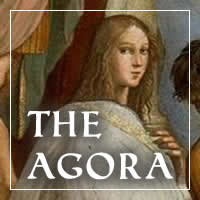
the Agora on Facebook
The Blooming Staff is published on bimonthly on Tuesdays here on the Agora; follow it via RSS or e-mail!
Please use the links to the right to keep on top of activities here on the Agora as well as across the entire Patheos Pagan channel.



